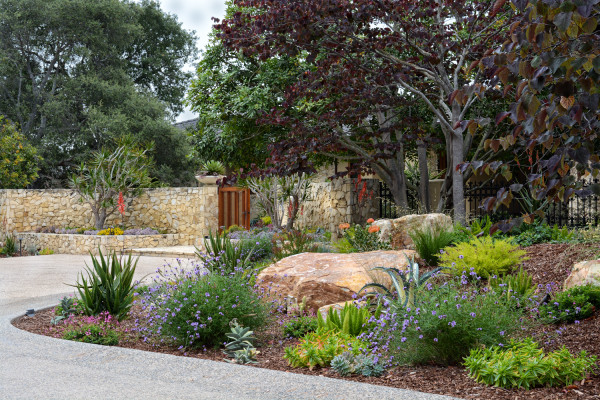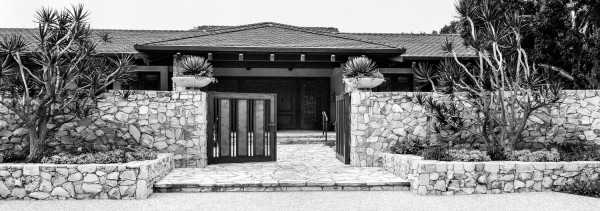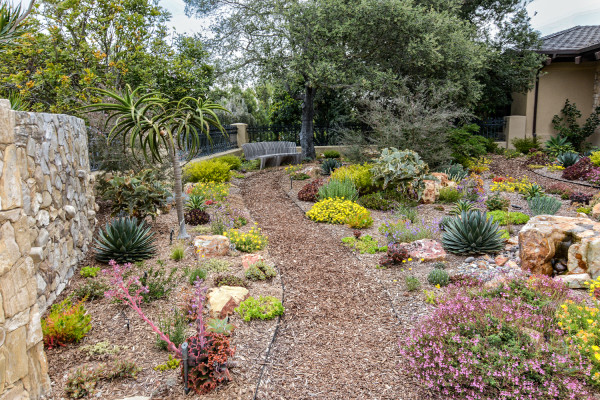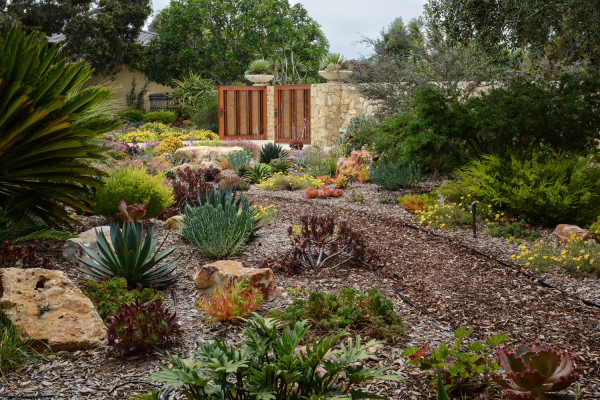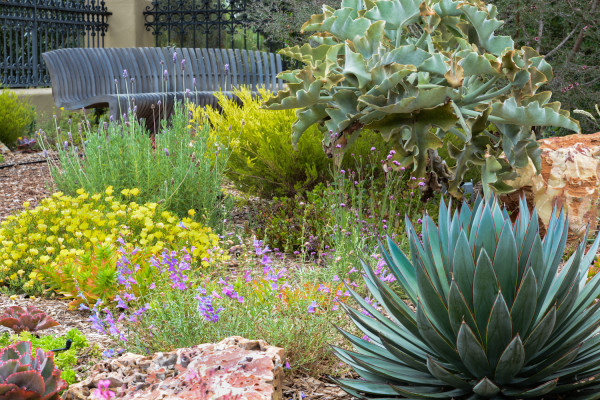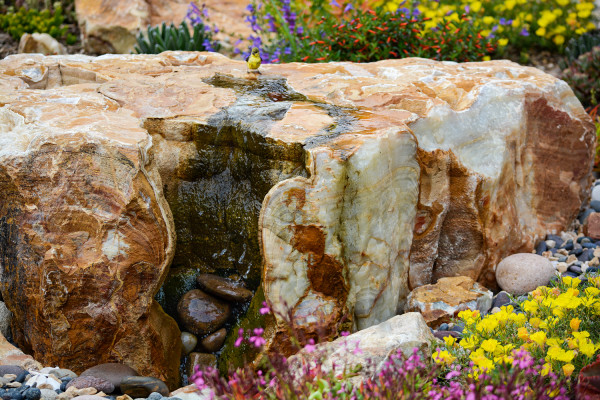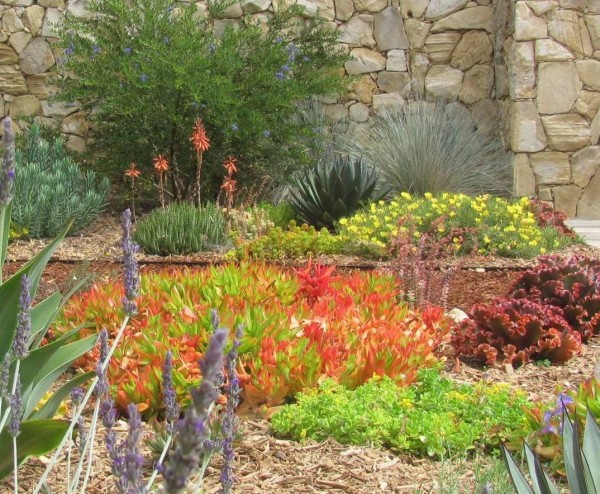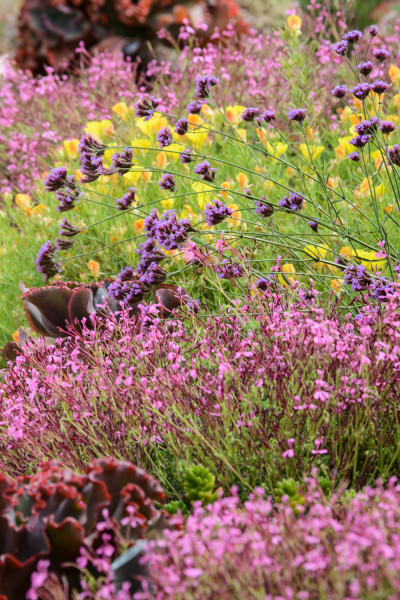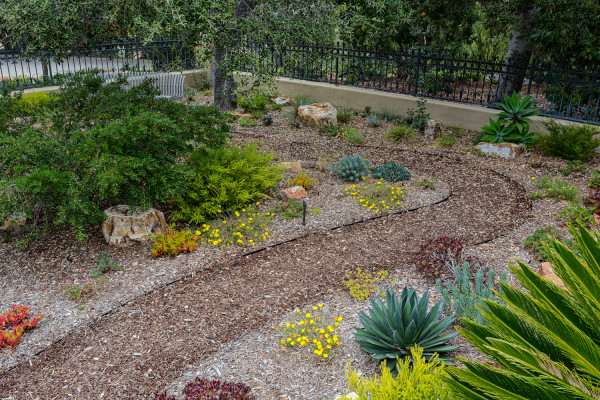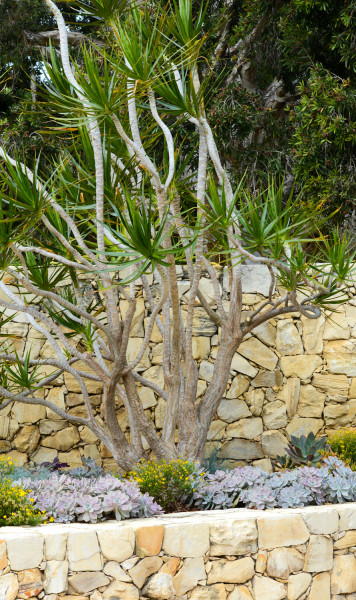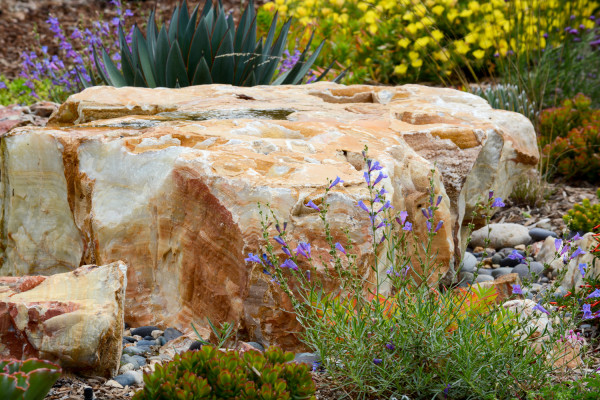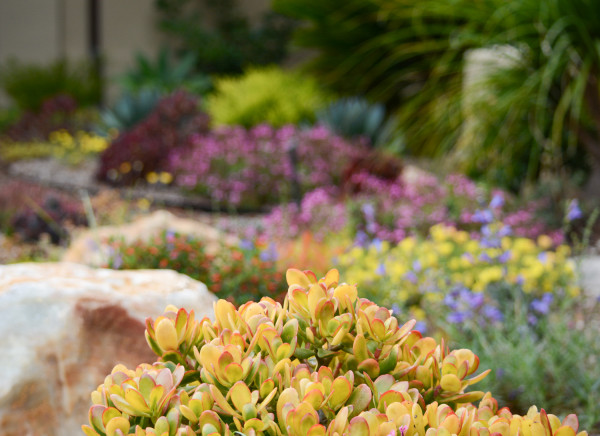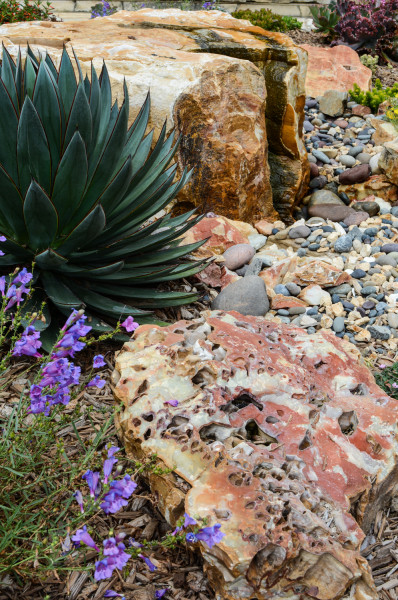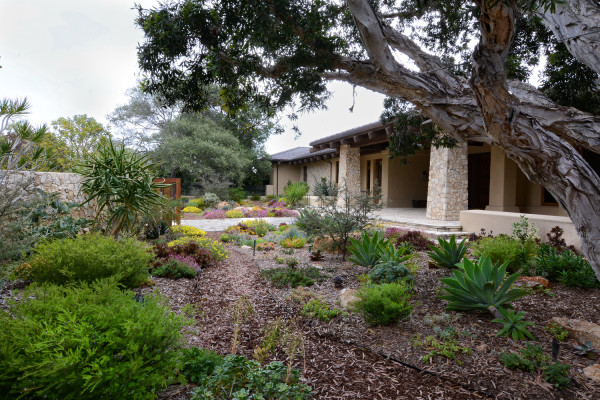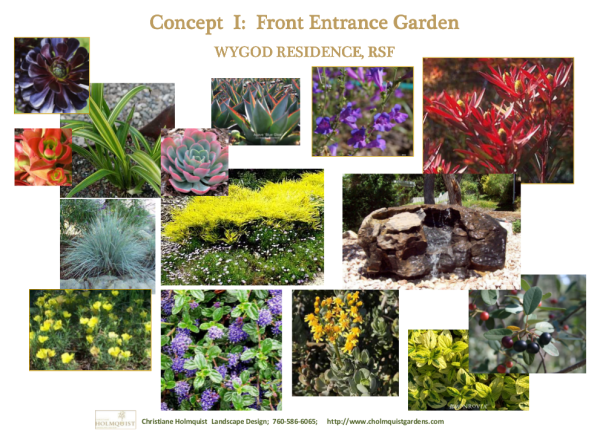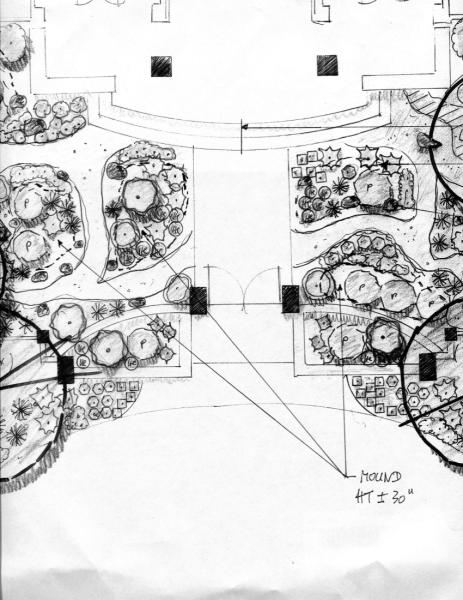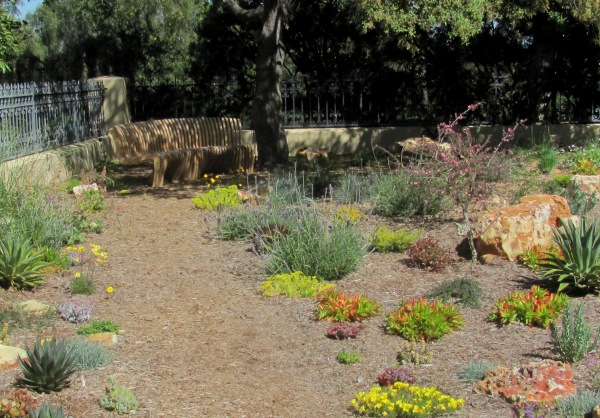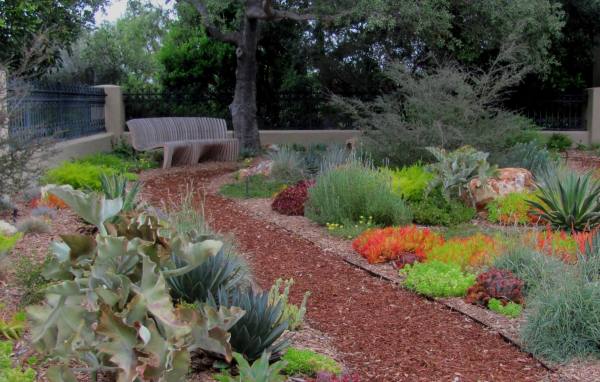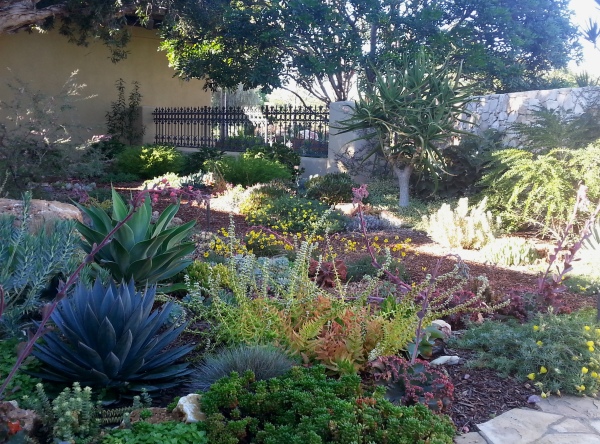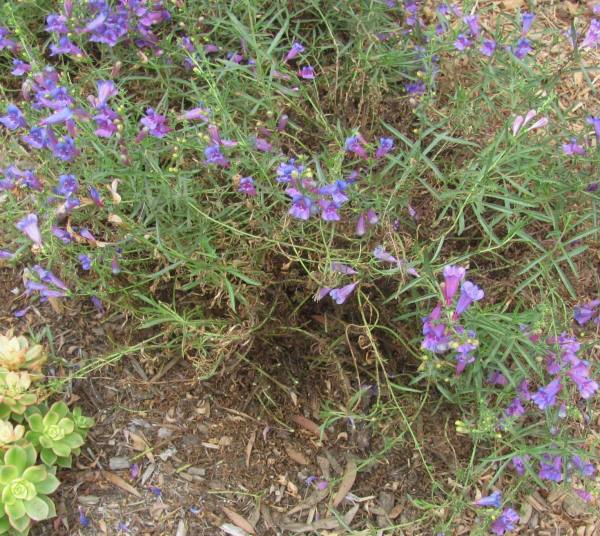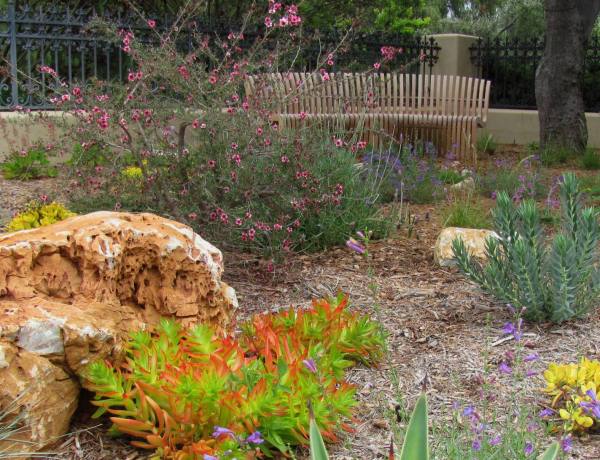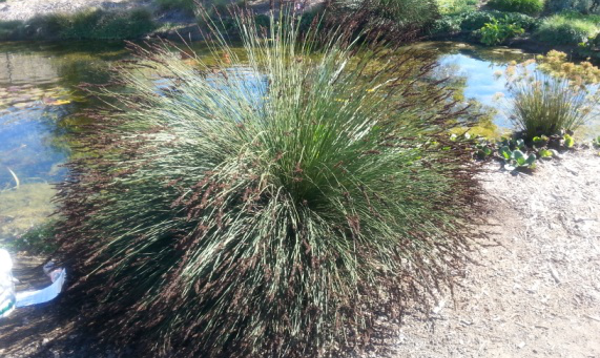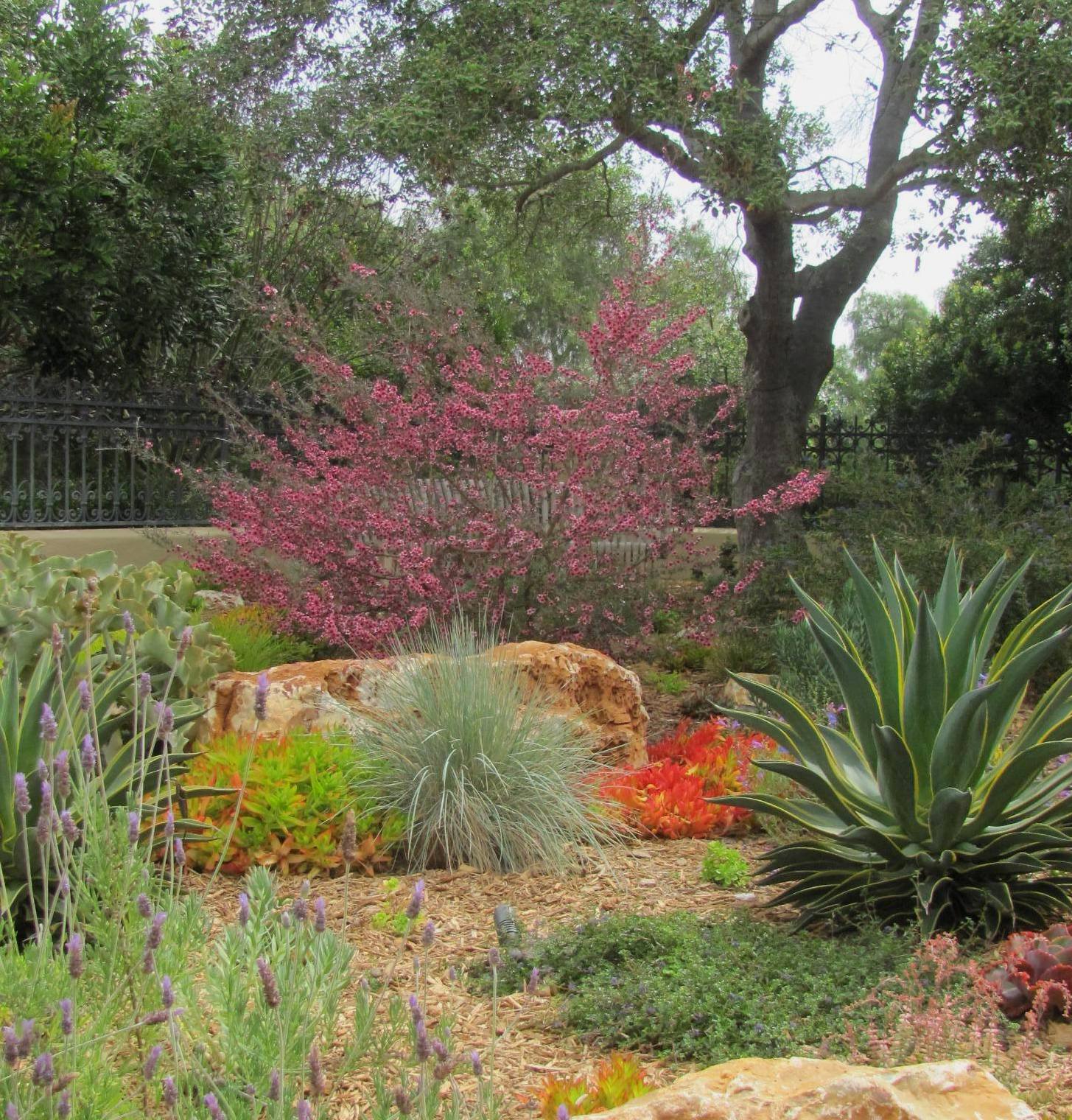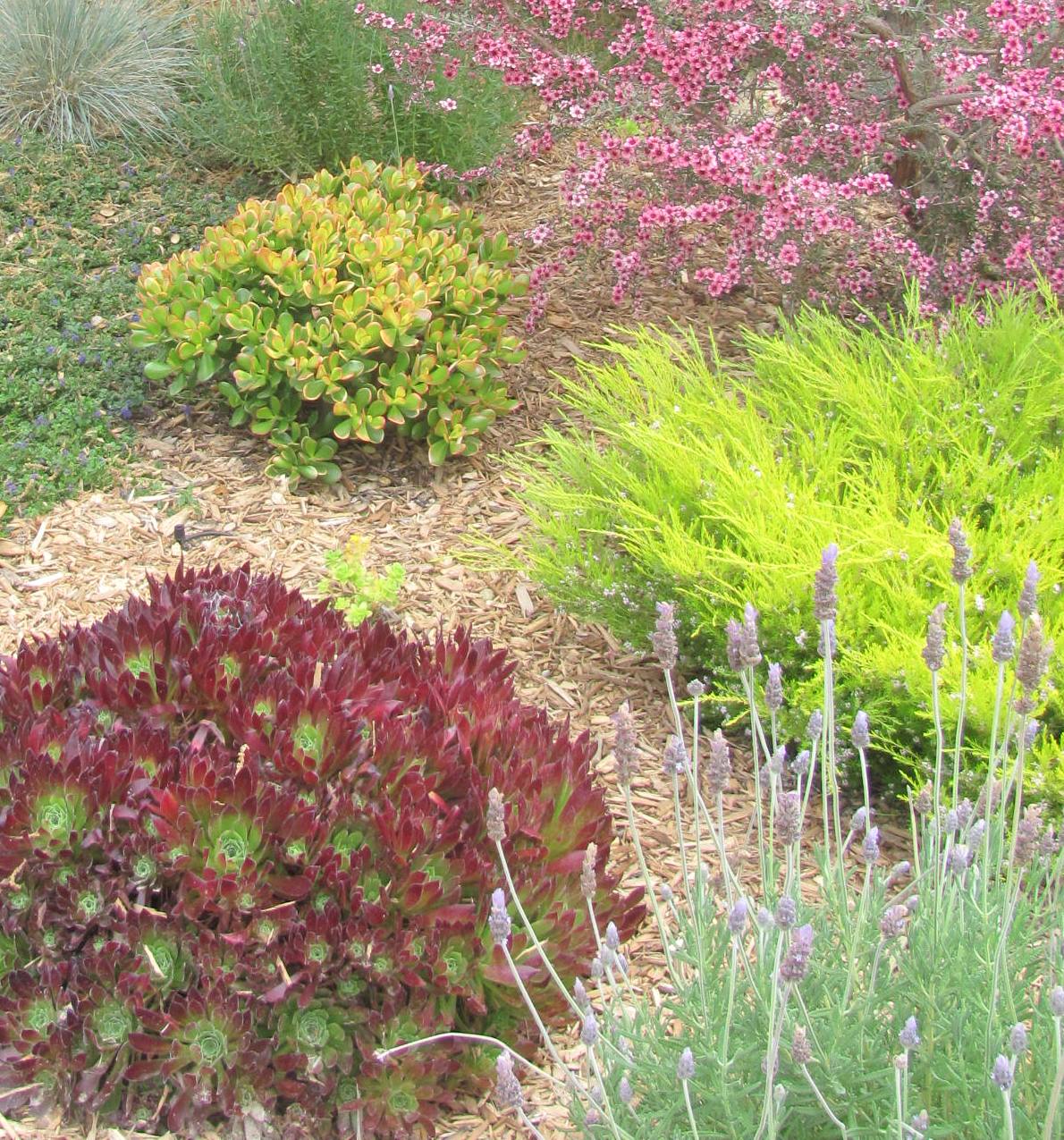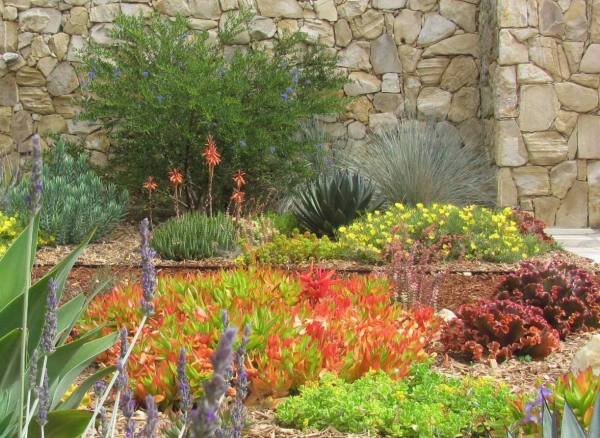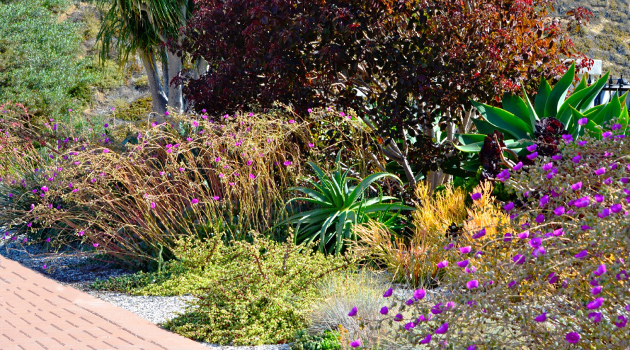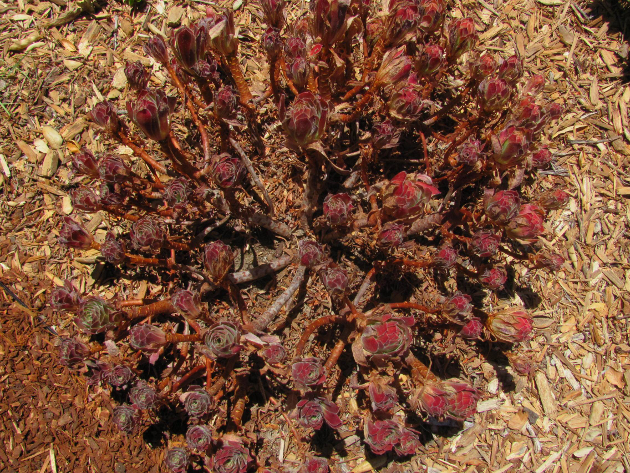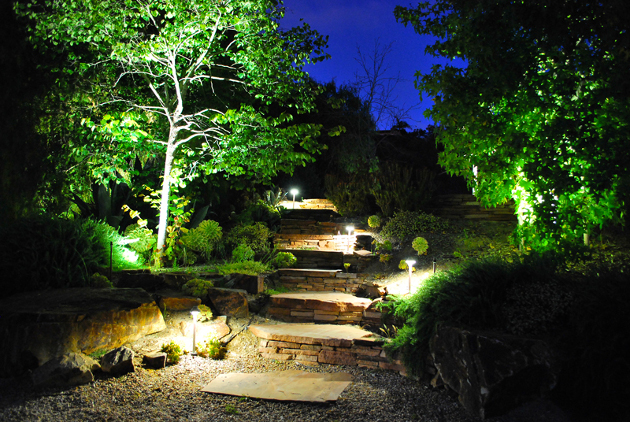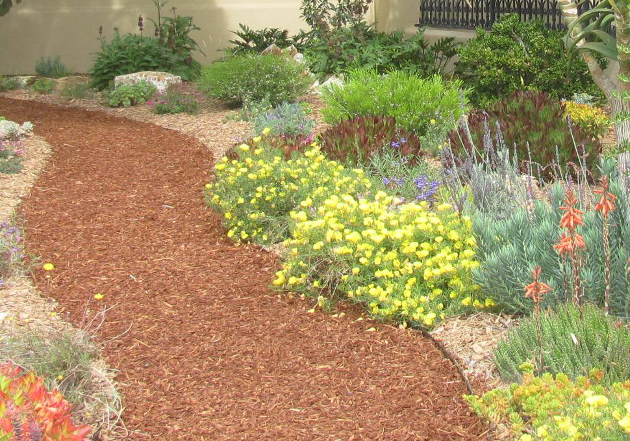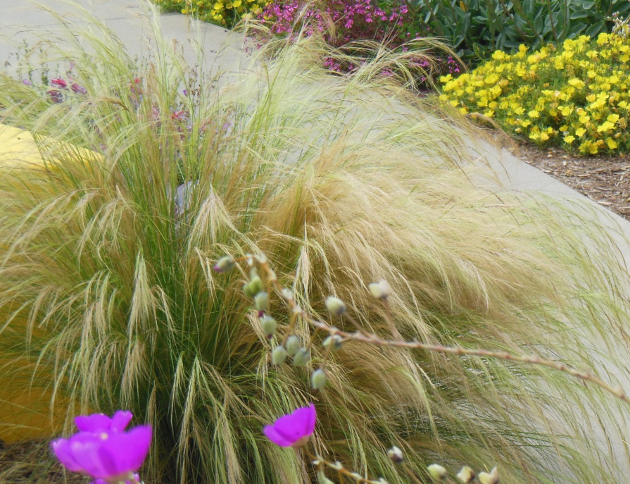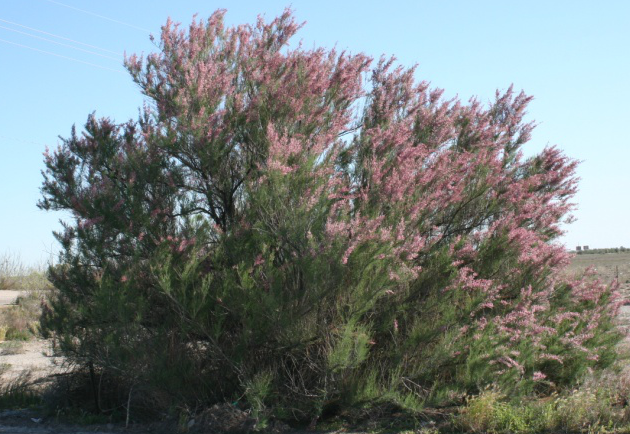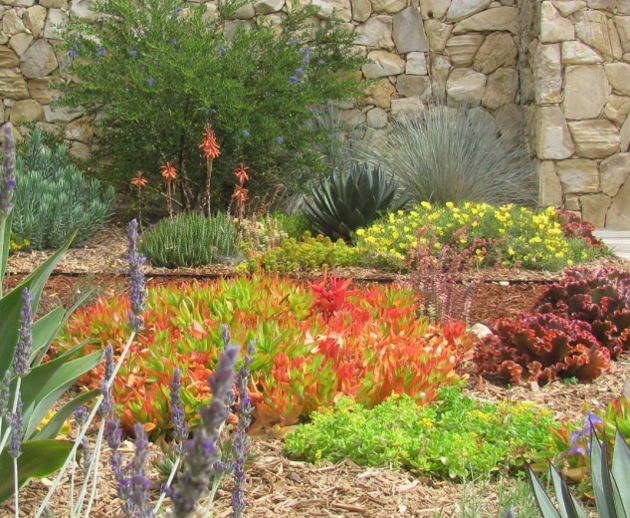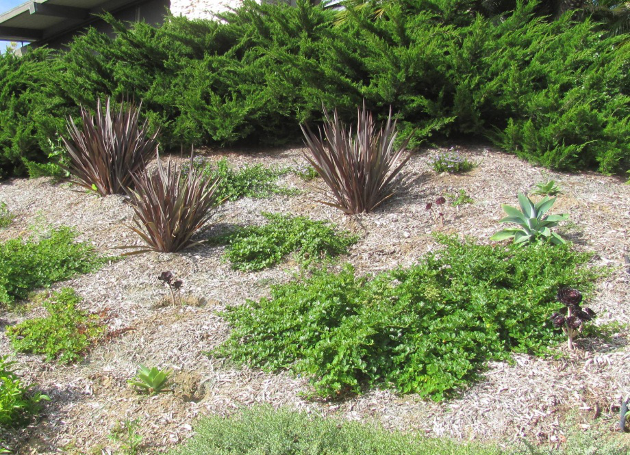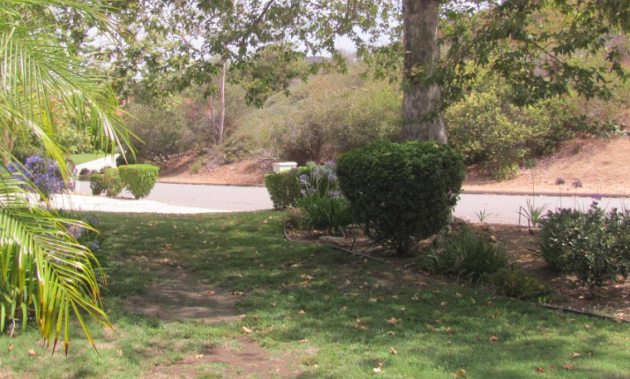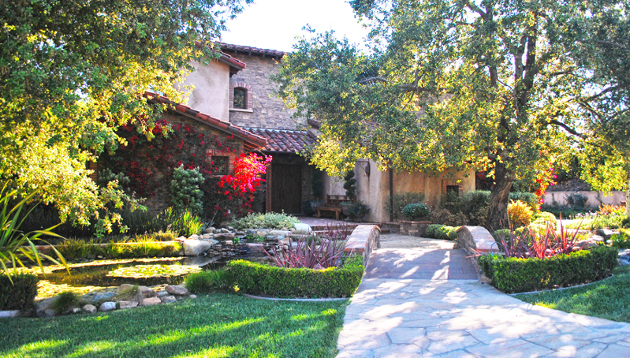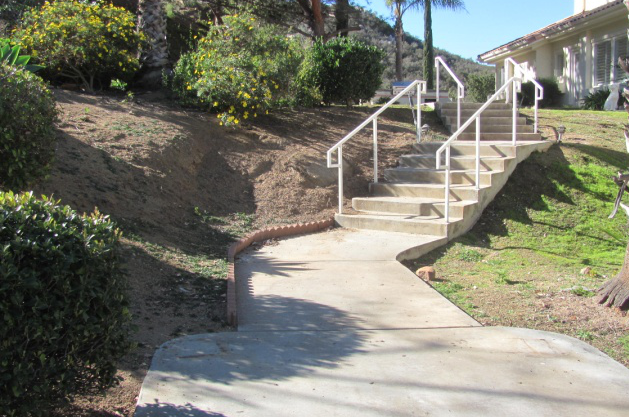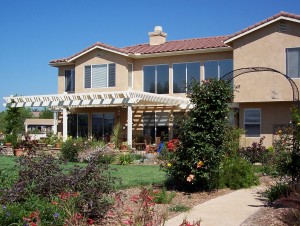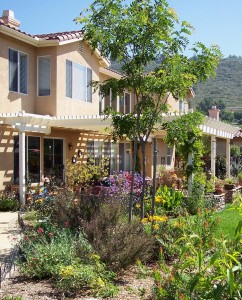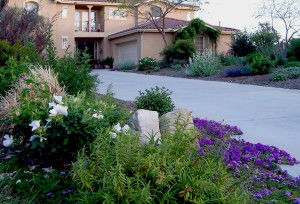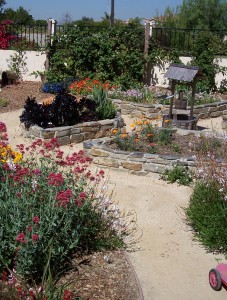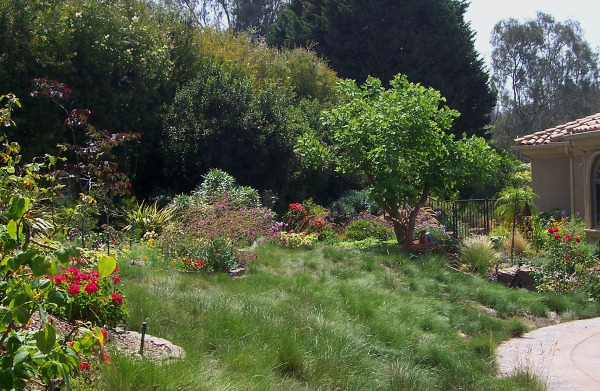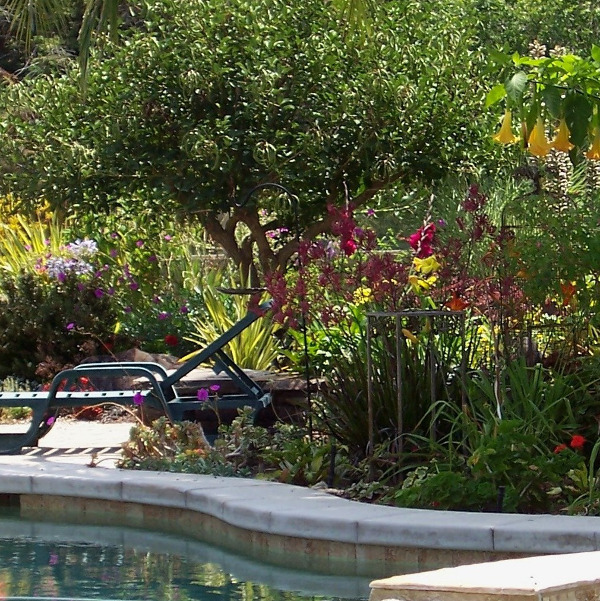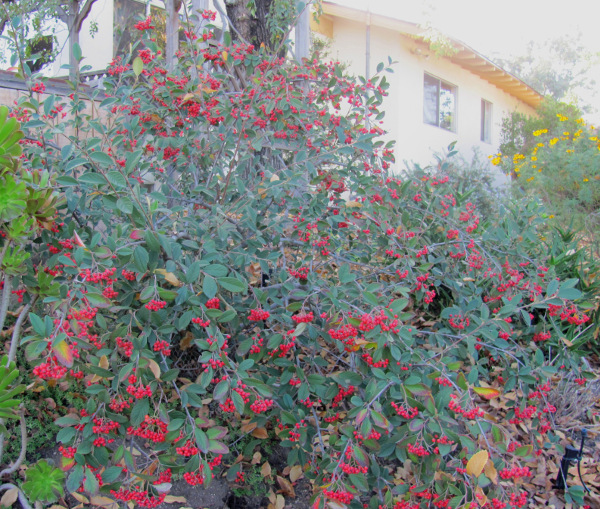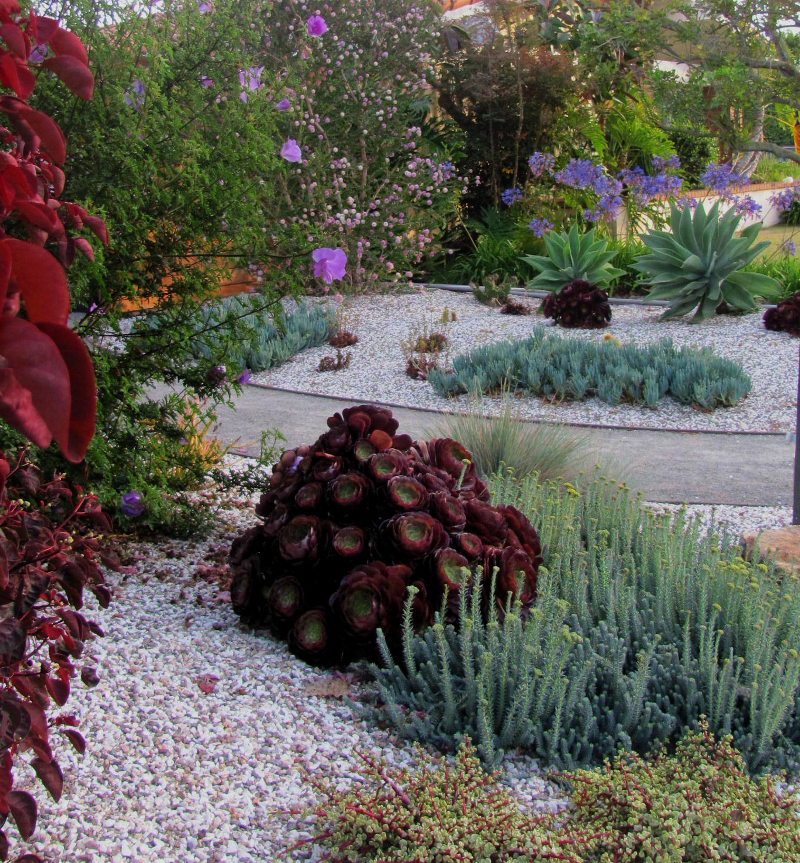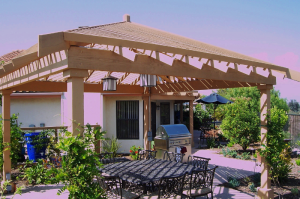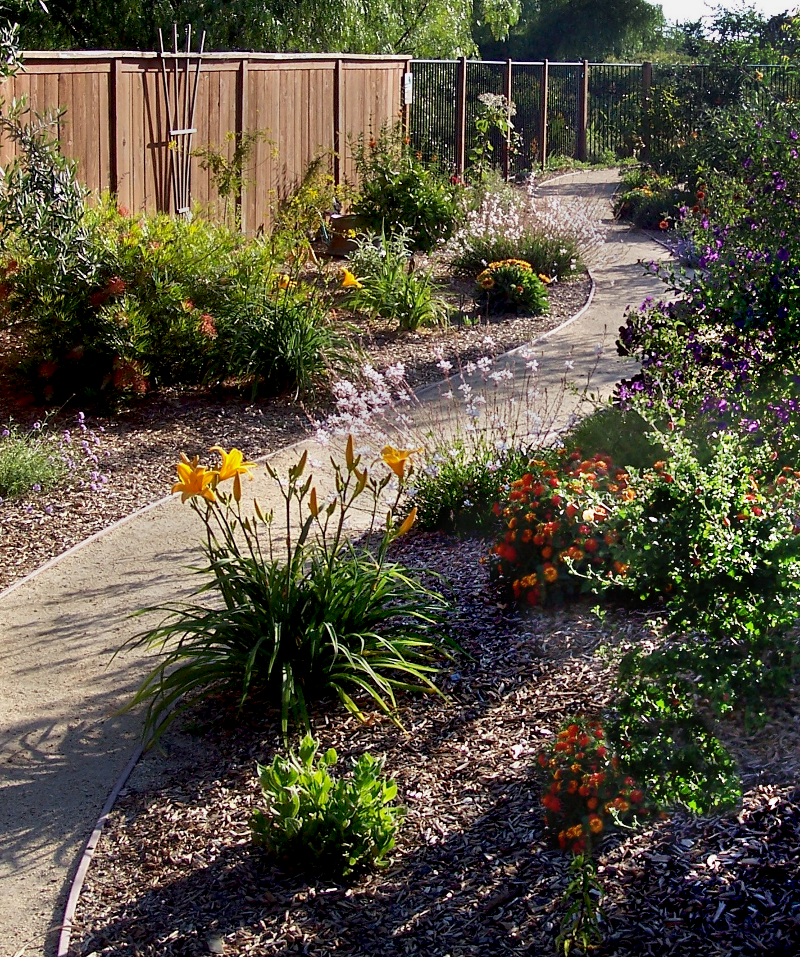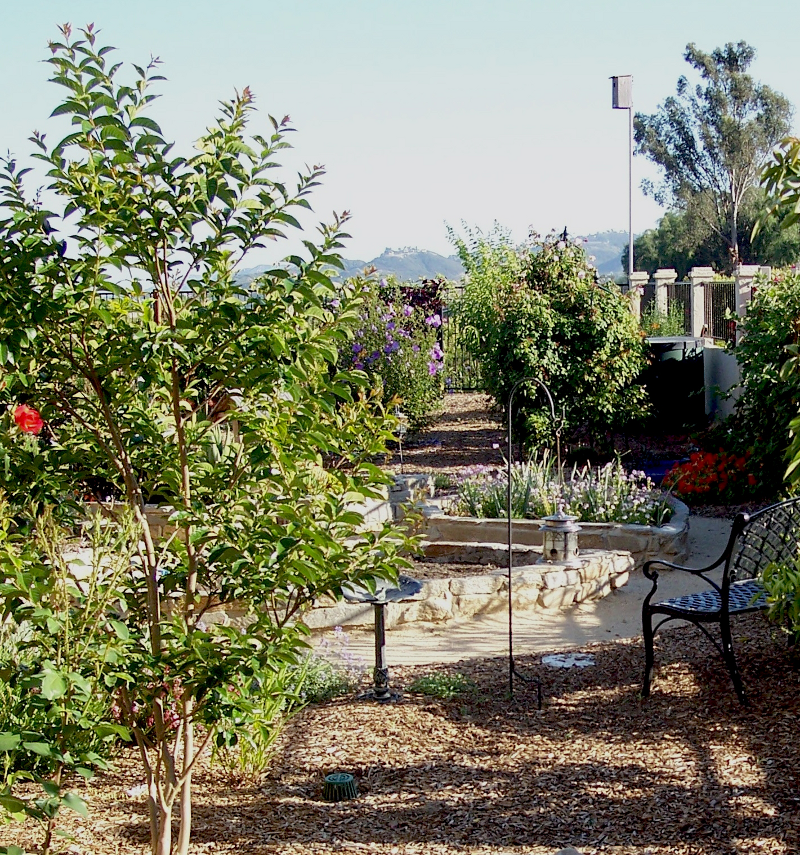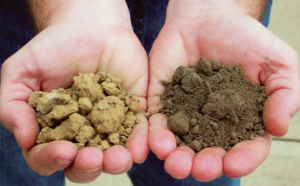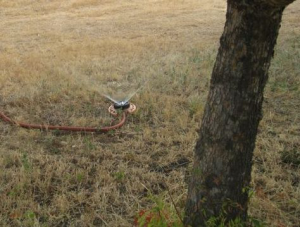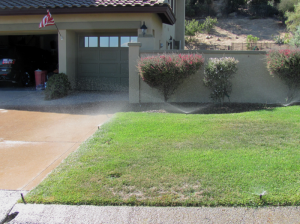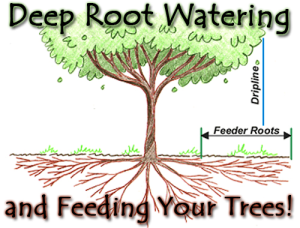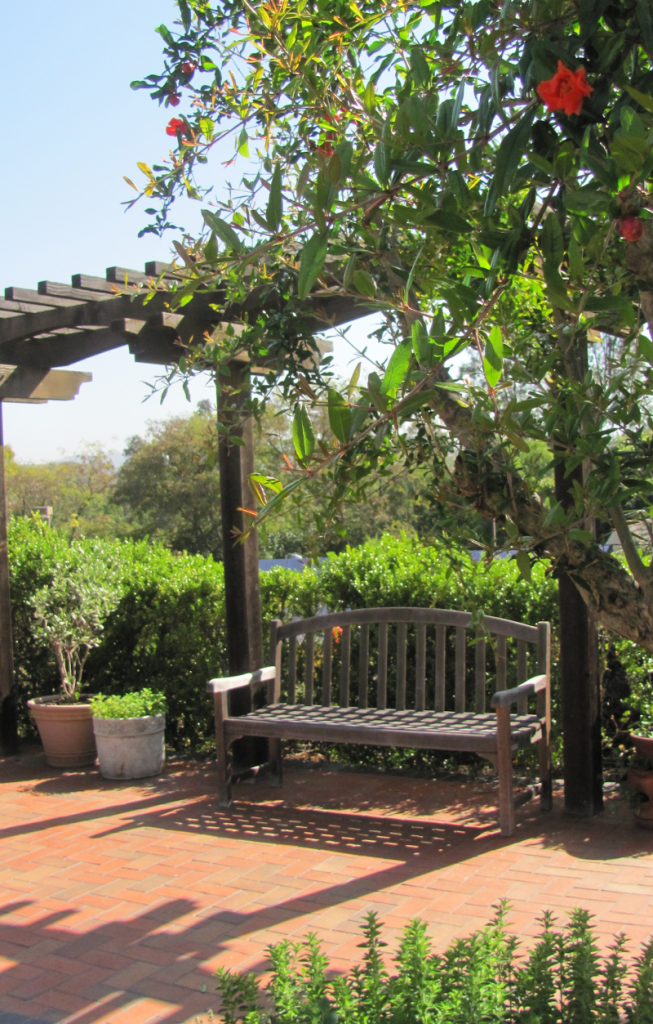I hope spring has revived your gardening interests to rediscover your connection with nature, and that you have been well. My spring clean-up is not done yet; I’m still finishing bird netting over my strawberries, refreshing mulch, and getting my irrigation in shape.
In my last two posts, I was considering how hardscape has come to dominate many of our landscapes, and how the beauty, intimacy and romance has gone out of them. Today I want to show how well-selected plants can balance out the hard structures making our gardens softer and more welcoming.
[I’ll be speaking about this topic at the Water Conservation Garden on June 11, from 10-12 a.m. Come and join me and see more in-depth information and examples. I’d love to see you there!]
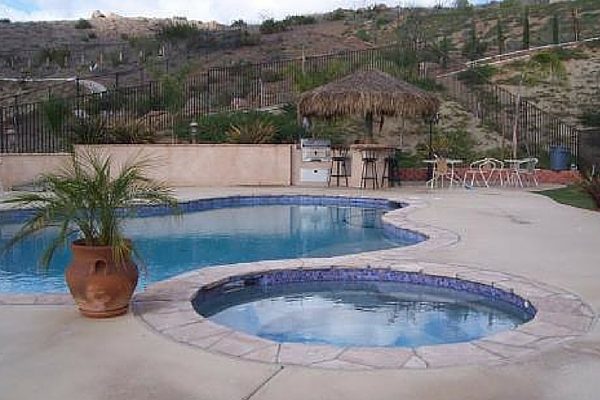
This pool deck feels hot, and even in the water I imagine needing sunglasses to tolerate the glare from pavement and walls.
This design looks like many prized landscapes that boast a lot of flawless architecture; an artful pool, perfect stucco’ed retaining walls, a big deck with BBQ and Palapa dominate this backyard. Naturally we are proud of the beautiful materials used in these designs, but to me these landscapes look overdesigned and lifeless; I feel that they miss the opportunity to provide a true connection to the land, our family, even ourselves.
However, our gardens can be ideal vehicles to give our lives greater depth when we give plants greater importance and let them enchant us, when we let them make our gardens softer and more welcoming. Here is a list of plants that have presence in the garden, have in their combined use strong emotional impact and fulfill many of the functions that we have handed over to the “hardscapes”. Most of these are very drought-conscious or drought tolerant, so not only do they serve our immediate needs, they also help conserve water…
TREES
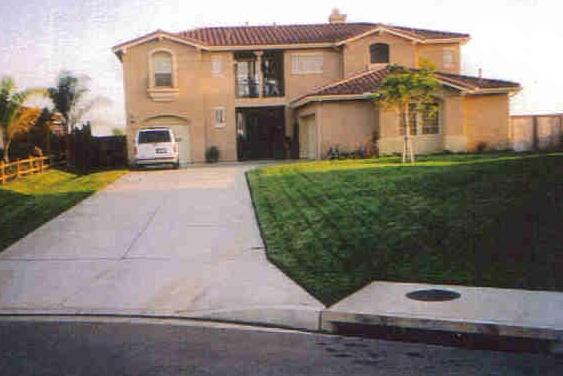
This house begs to be dressed up and anchored to its place, with the help of trees.
Most gardens, even the smallest ones, need at least one or two trees. Trees shelter a garden space; anchor a home to its site by giving it the right proportions; they can frame a view, impart age and “wisdom” and provide needed shade and well-being. As architectural elements, they provide a “vertical element”; give a sense of place.
The following lists are by no means exhaustive; they only give a glimpse of what’s possible.
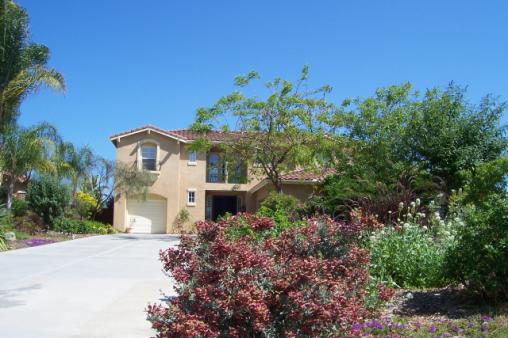
The trees play a big role in making this front garden much more welcoming.
Obviously, a good choice unites the site conditions with the tree’s character as well as the likes and dislikes of the person who will live with the tree.
Also, consider that a tree that naturally suckers can be trained into a “multi-trunked” tree that offers the opportunity to enjoy its trunks better, show off its shape and create an open, airy screen. A multi-trunk Crape Myrtle comes to mind…
Medium to large deciduous trees: canopies for shelter and shade
Chinaberry Melia azederach
White Empress Tree Paulownia fortune
Chinese Pistache Pistachia chinensis
Chinese Flame Tree Koelreuteria bipinnata
Mesquite Propopis spp.
Mimosa or Silk Tree Albizia julibrissin
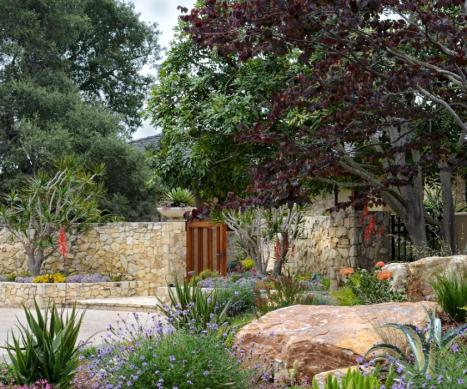
A tree’s foliage softens the many stone elements in this design; its canopy hugs the entrance into this garden.
Evergreen trees
Strawberry Tree Arbutus ‘Marina’
Texas Olive Cordia boissieri
Sweet Bay Laurus nobilis
Phoenix Date Palm Phoenix
Oak (many species) Quercus spp.
Magnolia
Acacia & Wattle (many) Acacia spp.
Primrose Tree Lagunaria patersonii
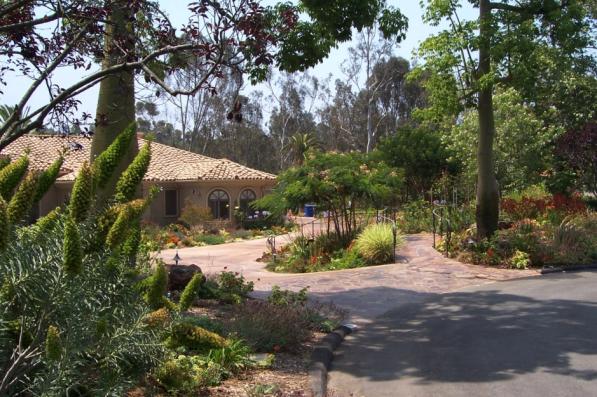
Instead of gate columns, a duo of Floss Silk Trees frames the entrance into this garden. The Mimosa in the center will soon shade even more of this welcoming entrance.
Small deciduous, attention-grabbing speminen trees
Paperbark Marple Acer griseu
Chinese Fringe Tree Chionanthus retus
Crape Myrtle Lagerstroemia indica & Lagerstroemia hybrids
Palo Verde Parkinsonia aculeata
California Buckeye, Horse Chestnut Aesculus californica
Trees with distinctive foliage and/or attractive fall foliage; or with great winter silhouette
Crape Myrtle Lagerstroemia spp.
‘Forest Pansy’ Redbud Cercis Canadensis ‘Forest Pansy’
Locust Robinia pseudoacacia
Mesquite Prosopis spp.
California Buckeye Aesculus californicus
Cork Oak Quercus suber
ENCLOSURES & SCREENING (TREES & SHRUBS)
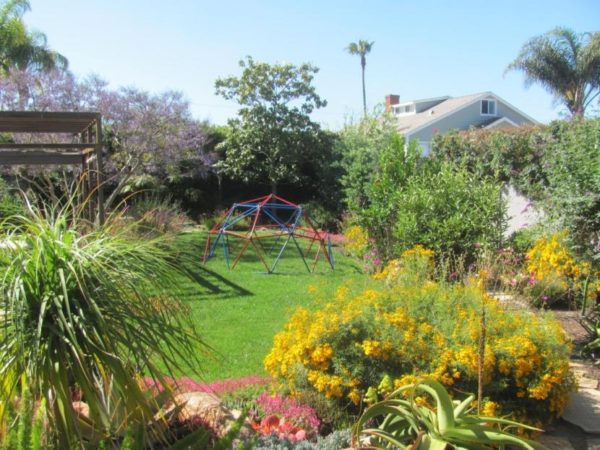
If it weren’t for the view of the ocean that we want to preserve, the shrubs and trees would soon hide all surrounding roofs and structures and reinforce the feeling of private sanctuary.
Let plants do the screening and enclosing (or at least hide the hard materials). The enclosure responds to an ancient desire for protection, and screening out an unwanted view or our neighbors’ homes and windows creates the best environment in which we can feel completely at ease, relax and connect with ourselves.
Camouflaging the boundaries to our private “universe” creates the sense that we are surrounded by nature which can make our gardens feel larger. Hedges of mixed plantings can provide a good screen or enclosure that requires only minimal pruning and shows off a variety of textures and colors.
Screening Plants (some might need gentle pruning to integrate into the hedge)
Toyon Heteromeles arbutifolia (a California native)
Yew Pine Podocarpus macrophylus and P. macrophyllus maki Shrubby Yew Pine
Oleander Nerium oleander
Bamboo Bambusa spp.
Lemon Bottle Brush Callistemon citrinus
Bay Laurus nobilis
Boxwood Buxus sempervirens (when left unclipped as it is rarely seen, it develops a form that is sensuous and curvaceuous)

Bamboo is on its way to hide the tall house in the background.
Exclamation points & Beacons; “Power Plants”, & columnar/fastigiated plants
These are plants with strong presence that replace gate columns or other devices of directing traffic; they also impart a very personal character to the garden.

Iconic Italian Cypresses give this garden a Mediterranean feel (10)
Cedar Cedrus spp.
Boxwood Buxus sempervirens
Greenlee’s Blue Rocket Cupressus guadalupensis ‘Greenlee’s Blue Rocket’
Tecate Cypress Cupressus forebesii
Italian Cypress Cupressus sempervirens
Bottlebrush ‘Sim’ Callistemon vimiminalis ‘Slim’
Icee Blue Yellow-Wood Podocarpus ‘Icee Blue’
Kohuhu Pittosporum tenuifolium (various)

The flowering Bromeliads Vriesea imperialis tower like exclamation points in this plant scene and give this garden an exotic feel.
THE FOREGROUND
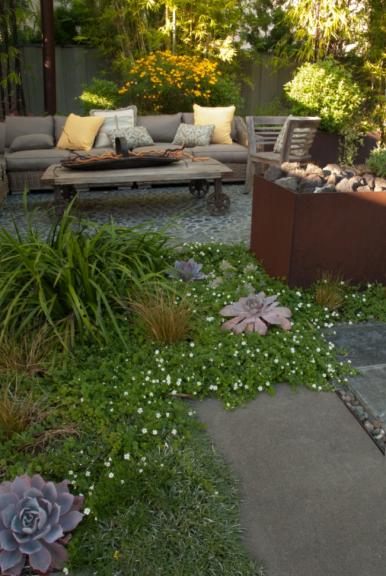
Some form of pavement might be welcome for certain activities in the garden, such as dining, lounging or hanging around a pool. However, many plants can be employed to soften the edges of pavement, to connect spaces, and to break up large expanses of pavement.
They can also guide our paces and allow rich encounters in the garden. Their closeness to the visitor demands a variety of textures and colors.
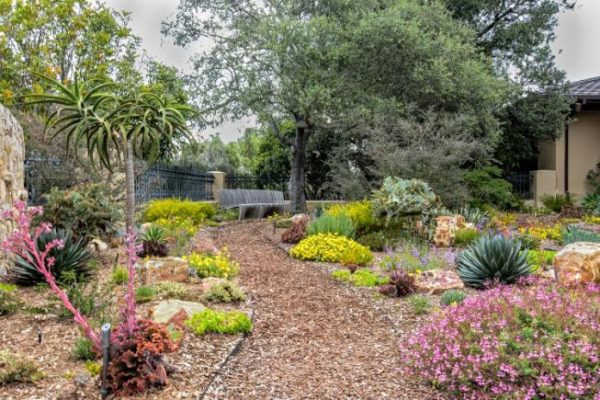
A narrow path invites an intimate and casual journey of discovery.
Low-growing, softening perennials
Trailing Buttercups, Sundrops Calylophus drummondii (or Calylophus hartwegii)
Little One Verbena Verbena bonariensis ‘Little One’
Stalked Bulbine Bulbine frutescens
Ground Morning Glory Convolvulus mauritanicus (C. sabatius)
Woodland Strawberry Fragaria vesca F. vesca californica (fruit bearing, excellent groundcover for shady situations)
Pink Spice Cranesbill Pelargonium ionidiflorum
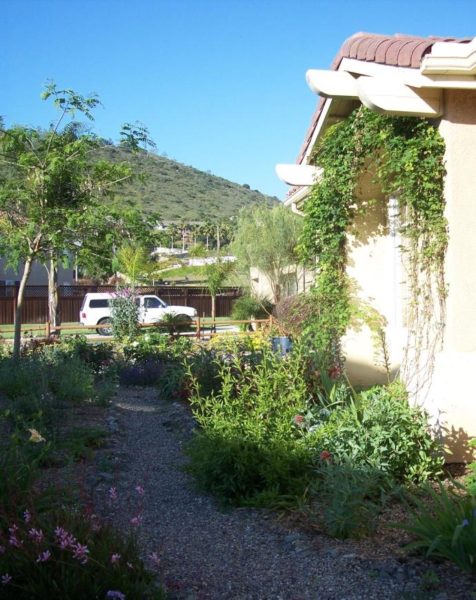
For less-often used paths, you could use just mulch, no edging needed.
THE MID GROUND
Mid ground shrubs anchor the design, provide longevity and structure; they serve as also fillers; some can do double duty as accents. For these, I like to use shrubs with woody character; they are needed to “ground” the soft and inherently ephemeral perennials. In most designs, I prefer evergreen shrubs; they need not be shrubs with attractive bloom.
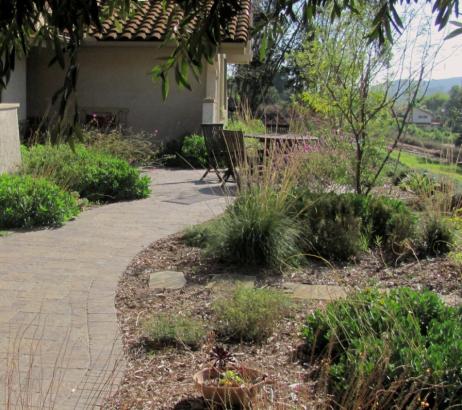
The pavement echoes the sinuous forms of plants that work together to create the experience of discovery on approaching the hidden sitting area.
In landscapes with more succulents, I like to use shrubby succulents that keep their form and their ‘leafy’ or fleshy foliage (Senecio, Aeonium haworthii).
Mid-ground shrubs
Dwarf variegated Myrtle Myrtle Myrtus communis ‘Variegata’ compacta
Creeping Barberry Berberis repens
Hummingbird Sage Salvia spathaceae (California native plant)
Rockrose ‘Sunset’ Cistus ‘Sunset’ 2-3 x 6-8 ft; evergreen, magenta flowers
Senecio amanensis
Aeonium haworthii
Geraldton Waxflower ‘Purple Gem’ and ‘Purple Pride’ Chamaelaucium uncinatum
Blue Bells Eremophila hygrophana
Grevillea rosmarinifolius ‘Scarlet Sprite’ , foundation shrub, 4-5 ft,
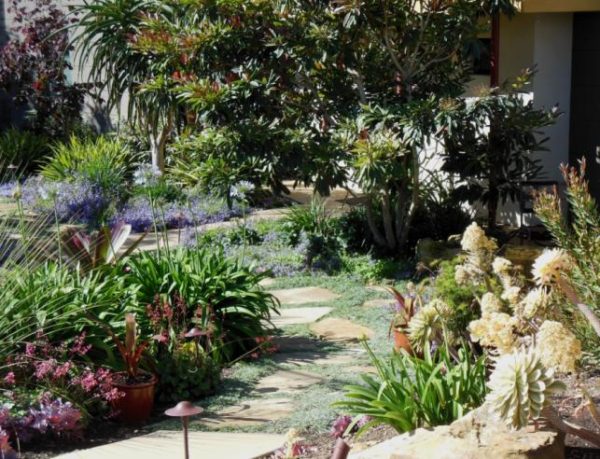
Plants invite the path to curve around them, creating suspense and making you wonder what’s behind them.
Cacti, succulents, yucca-like plants: Plants with striking foliage and/or form
Century Plant Agave spp.
Aloe spp.
Candelabra Cactus Cereus peruvianus
Sotol Dasylirion spp.
Dragon Tree Dracaena draco
Barrel Cactus Echinocactus spp.
Beargrass Nolina spp.
Prickly Pear Opuntia
Yucca
Clumping Bamboo Bambusa spp.
Sago Palm Cycas revoluta
Chamal Dioon spp.
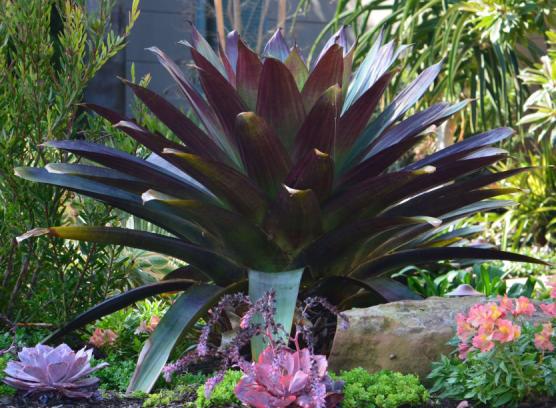
A Vriesea imperialis Terrestrial Bromeliad is a dramatic accent here – but just wait until it’s in bloom! (see above)
THE LARGE STUFF: Accents & “signature”
Sometimes it’s useful to employ shrubs that draw the eye, perhaps in order to distract from an unwanted sight behind it… These shrubs can be “signature” plants that enhance or underline the character of the garden: Subtropical, or Mediterranean, or California native, or Urban/modern.
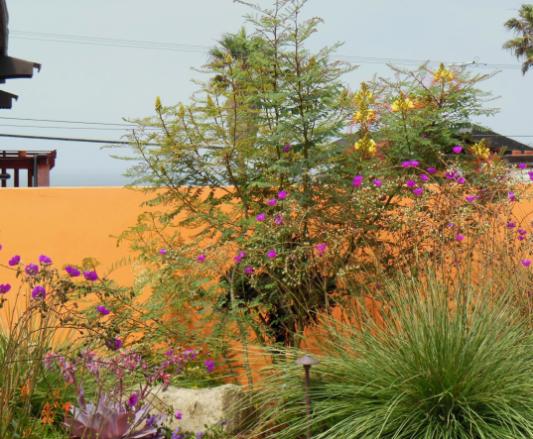
A Yellow Bird of Paradise sets the theme in this garden where succulents, drought tolerant perennials and grasses create an entertaining variety of undemanding plants.
Tecoma ‘Solar Flare’
Texas Ranger Leucophyllum frutescens
Baja Fairy Duster Calliandra californica
Brazilian Copper Tree Euphorbia cotinifolia
Arabian Lilac Vitex trifolia ‘Purpurea’
Large backround shrubs
Some shrubs are needed to simply give the illusion of being surrounded by endless nature, as back ground plants.
Griselinia Griselinia littoralis
Sweet Olive Osmanthus fragrans
Toyon Heteromeles arbutifolia
Bay Laurus nobilis
EMOTIONAL IMPACT, NOT ARCHITECTURE
I believe a garden, in order to enhance our connection with nature, to nurture us and to be memorable, needs to appeal to our emotions, whether is has a modern geometric design or is more free-form, naturalistic in character. I’d do this by making the garden look “grown” and casual, not forced, like in this example: When creating a southwest garden and imitating the desert floor, consider a mix of several sizes and textures of that hard material: A desert floor is made up of fine textured sand, coarser gravel, and small and large pebbles interspersed with rocks. A groundcover therefore made of a uniform cover of gravel would look unnatural.
Placement and size of plants: When placing a bold grouping of, say, Barrel Cacti, make sure the placement is asymmetrical, in order to achieve a nature-made effect. Introduce these plants in different sizes, not all the same which would look contrived.
Mix textures: Avoid making a garden with only strong textured plants; in nature, those plants are always surrounded by more ephemeral, fine textured plants.
In other words, study how plants and landscapes grow… disguise the hand that is designing the garden, and aim for the emotional impact that a naturalistic garden can impart, even when it is a geometrically organized, modern design.
Look to my next post for more on how plants can help us create living designs.
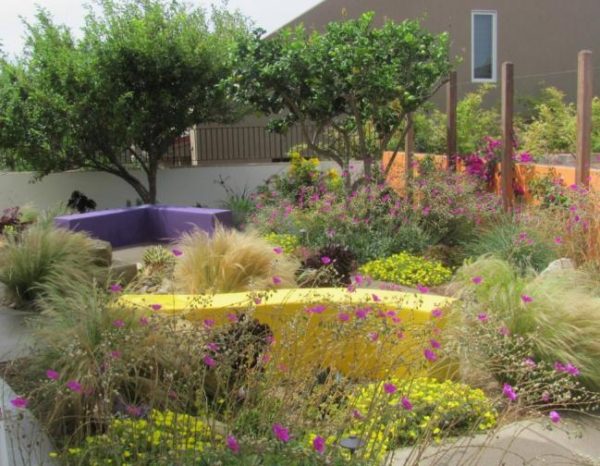
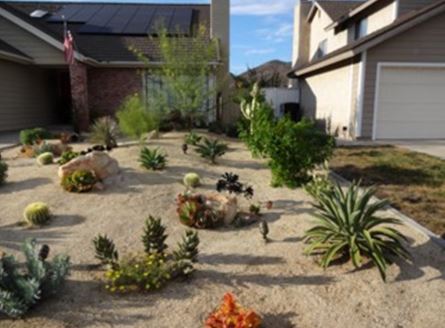
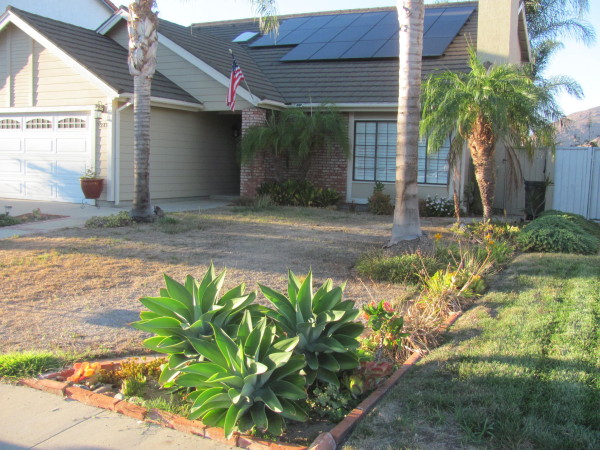

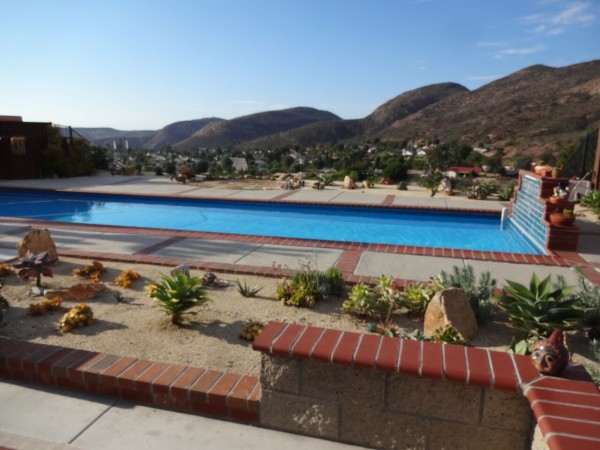
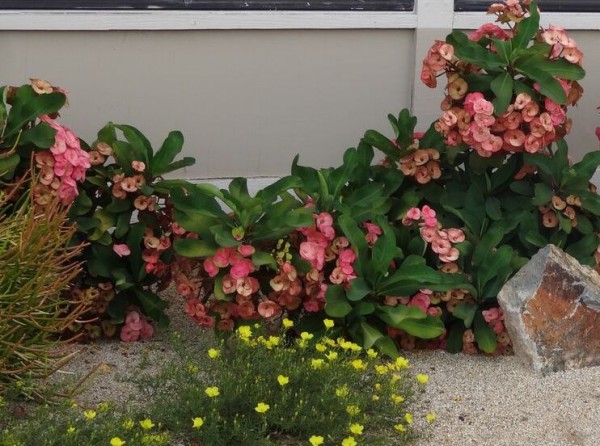
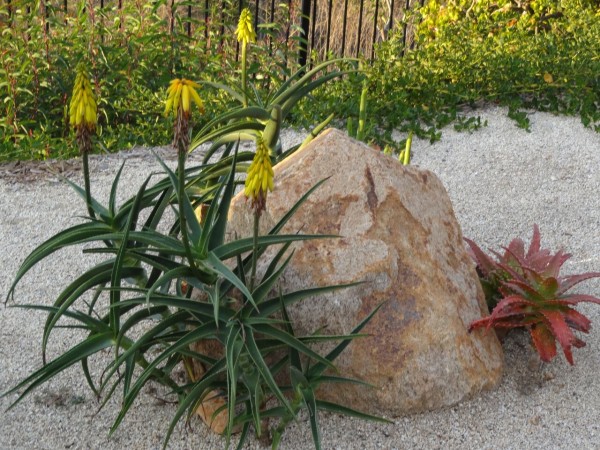
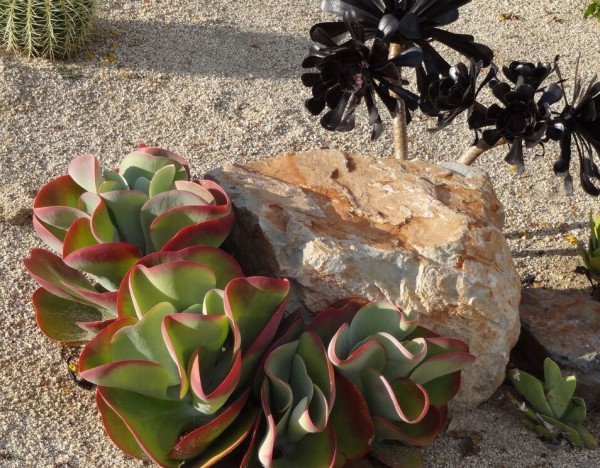
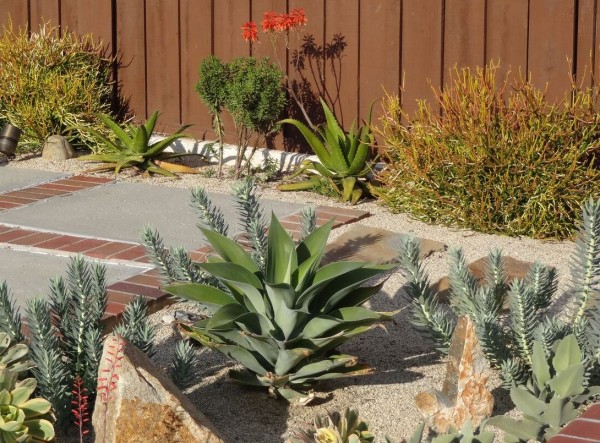
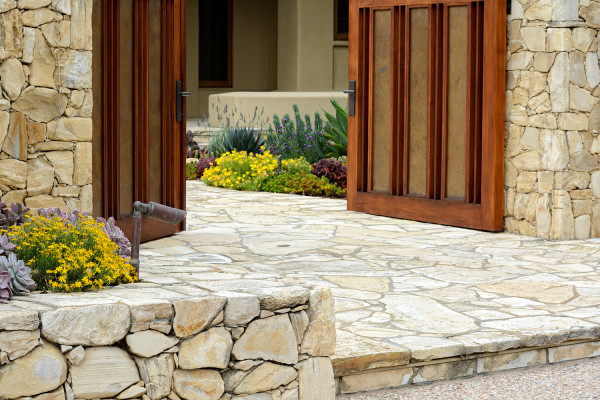 Problem:
Problem: